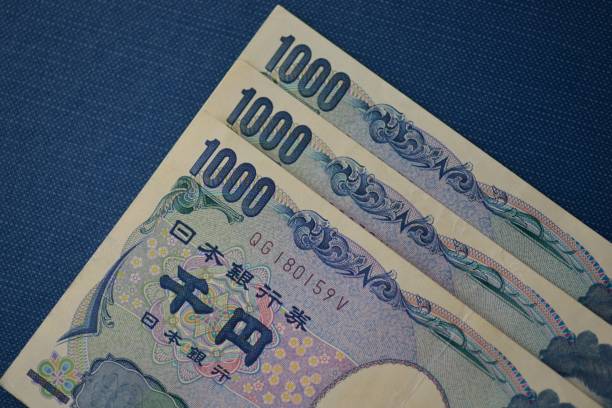Japanese Yen weakens to over one-week low against USD amid divergent BoJ-Fed expectations

■ The Japanese Yen continues losing ground on Friday amid the BoJ policy uncertainty.
■ The hotter US PPI released on Thursday underpins the USD and further boosts USD/JPY.
■ Traders look to the US data for some impetus ahead of central bank meetings next week.
The Japanese Yen (JPY) prolongs the descending trend against its American counterpart for the fourth straight day on Friday and drops to over a one-week low during the Asian session. Diminishing odds for an imminent shift in the Bank of Japan's (BoJ) policy stance turn out to be a key factor undermining the JPY. In fact, the BoJ Governor Kazuo Ueda offered a slightly bleaker assessment of the economy earlier this week and dashed hopes for a rate hike next week.
In contrast, the hotter-than-expected US Producer Price Index (PPI) fueled speculation that the Federal Reserve (Fed) will reiterate its higher-for-longer interest rates narrative to bring down still-sticky inflation. This, in turn, is seen acting as a tailwind for the US Dollar (USD) and lending additional support to the USD/JPY pair. This, to a larger extent, overshadows the risk-off impulse and does little to benefit the JPY's safe-haven status or cap gains for the currency pair.
Meanwhile, the outcome of Japan’s spring wage negotiations indicated that most firms have agreed to the trade unions' wage rise demands, which should allow the BoJ to exit negative interest rates in the coming months. Hence, it remains to be seen if bulls can capitalize on the move up or opt to wait on the sidelines ahead of next week's key central bank event risks – the BoJ policy decision on Tuesday, followed by the outcome of a two-day FOMC meeting on Wednesday.
Daily Digest Market Movers: Japanese Yen is undermined by reduced bets for a March BoJ rate hike
The uncertainty over the Bank of Japan's next policy move continues to undermine the Japanese Yen and lifts the USD/JPY pair higher for the fourth successive day, to over a one-week high during the Asian session.
BoJ Governor Kazuo Ueda offered few clues on how soon the central bank would end the negative rate and said that policymakers will debate whether the outlook is bright enough to phase out the massive monetary stimulus.
Jiji news agency reported on Thursday that BoJ has started to make arrangements to end its negative interest rate policy at the March meeting as the bumper wage hikes give the central bank leeway to make the key policy shift.
Japan's Finance Minister Shunichi Suzuki said on Friday that the economy is no longer in deflation and that the government will mobilize all policy steps available to continue the strong trend of wage hikes this year.
Market participants, however, seem convinced that the BoJ won't tighten policy next week and wait until April when the amount of the wage rise pass-through to small and medium-sized firms becomes evident.
Meanwhile, the hotter-than-expected US Producer Price Index released on Thursday forced investors to scale back their bets for an interest rate cut in June, pushing the US Treasury bond yields and the US Dollar higher.
Data published by the US Bureau of Labor Statistics showed that the PPI for final demand rose by a 1.6% YoY rate in February as compared to the previous month's upwardly revised print of 1% and the 1.1% estimated.
Separately, the US Department of Labor (DOL) reported that there were 209K initial jobless claims in the week ending March 9, down from the previous week's 210K and better than the market expectation of 218 K.
This helps offset a slight disappointment from the US Retail Sales figures, which rose by 0.6% in February. Meanwhile, Sales Ex-Autos were up 0.3% and Retail Sales Control Group came in flat during the reported month.
Traders now look to Friday's US economic docket – featuring the release of the Empire State Manufacturing Index, Industrial Production figures and the Preliminary University of Michigan Consumer Sentiment Index.
The focus, however, remains glued to the BoJ and the FOMC monetary policy meetings next week, which should provide a fresh impetus and play a key role in determining the near-term trend for the USD/JPY pair.
Technical Analysis: USD/JPY might confront some resistance near 149.00, bulls have the upper hand
From a technical perspective, the overnight breakout through the 100-day Simple Moving Average (SMA) and a subsequent move beyond the 148.00 mark was seen as a key trigger for bullish traders. That said, oscillators on the daily chart – though have been recovering from lower levels – are yet to confirm a positive bias. Hence, any subsequent move up is more likely to confront stiff resistance near the 149.00 strong horizontal support breakpoint, now turned resistance. Some follow-through buying, however, might prompt an aggressive short-covering move and allow the USD/JPY pair to aim back to reclaim the 150.00 psychological mark.
On the flip side, the 148.00 round figure, followed by the 100-day SMA, currently around the 147.70-147.65 region, could offer immediate support. A convincing break below might turn the USD/JPY pair vulnerable to accelerate the fall back towards the 147.00 mark en route to the monthly swing low, around the 146.50-146.45 region. The latter nears the very important 200-day SMA, which if broken decisively will set the stage for the resumption of the recent sharp pullback from the vicinity of the 152.00 mark, or the YTD peak touched in February.
* The content presented above, whether from a third party or not, is considered as general advice only. This article should not be construed as containing investment advice, investment recommendations, an offer of or solicitation for any transactions in financial instruments.




